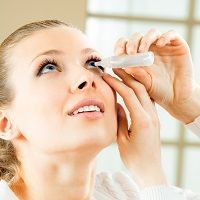Article
Apnea Patients Should Keep an Eye Out for Glaucoma
Author(s):
Successfully measuring the eye pressure of people with obstructive sleep apnea (OSA) indicated to scientists for the first time a relationship between sleep apnea and glaucoma.

Successfully measuring the eye pressure of people with obstructive sleep apnea (OSA) indicated to scientists for the first time a relationship between sleep apnea and glaucoma.
Specifically, research from Hokkaido University showed that OSA patients were nearly 10 times more likely than non-OSA patients to suffer from glaucoma — optic nerve disease triggered from increased eye pressure.
To effectively measure eye pressure in sleeping subjects, the research team used a special sensor similar to a contact lens to assess the pressure changes when OSA patients’ breathing stopped during sleep.
Typically, intrathoracic pressure rises if people stop breathing/exhaling, leading to higher eye pressure.
However, during their research, the team unexpectedly found that the eye pressure dropped when study participants stopped breathing. These patients also were likely to stop inhaling, not exhaling, as a result of closed airways, triggering lower intrathoracic pressure.
Additionally, the team noted the patients exhibited hypoxic effects, potentially causing optic nerve damage leading to glaucoma.
The authors concluded that the optic nerve could be damaged as a result of hypoxia without an increase in eye pressure — information that can help dissect the symptoms experienced by glaucoma patients with normal eye pressure levels.




